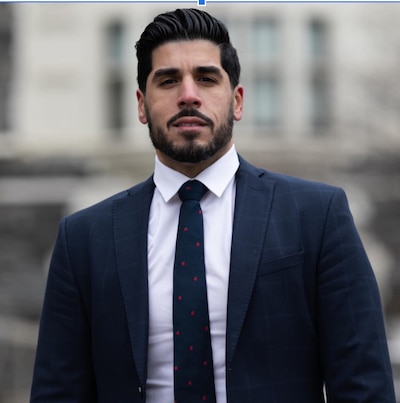“Hello, my name is Melissa, and my son has expressed how excited he is to have a ‘man teacher’ this year, which in turn made me excited for him.” She went on to write that I was her fifth grader’s first male teacher, adding: “You are all this boy talks about at home.”
It’s been six years, and that front-and-back handwritten letter remains folded in my desk drawer. I often read it at the beginning of the school year to remind myself of my purpose and how my role influences others.

Over the years, my students, regardless of gender, have shared similar sentiments with me. Research has also shown social benefits for elementary school students who experience a male teacher. But if children — and by extension, their parents — are so excited to encounter male elementary school teachers, why don’t we see more of them?
According to the National Center for Educational Statistics, in 2017-18, only 11% of teachers in public elementary schools identified as male. This past May, I wrapped up my first semester as an adjunct professor at the City College of New York’s Childhood Education Department, where out of 19 students studying to teach grades 1-6, only two were male. This semester, I have one male student out of 15.
As a student in the same program back in 2010, I was often the only man in the classroom. I enrolled in an elementary education program after a teacher friend of mine inspired me with her words: “There’s not enough of you in education, especially in elementary schools. We need people like you!”
I often wonder why there aren’t more men in elementary education. Then I think about how infrequently men my age had male teachers growing up — and I understand the importance of role models and the impact of having few or none.
I’ve had boys tell me they wanted to be a teacher when they grow up and “wear a suit, too,” which is how they described my usual attire of a shirt and tie. I will never forget the time when one student was so excited to show me his shiny new black shoes for graduation. “They look just like the ones you wear!” Moreover, additional male teachers can model for boys, especially boys without fathers or with absent ones, a healthy form of masculinity.
I’ve also seen male teachers connect with boys in ways that help them improve academically. During my second year as a teacher, a colleague warned me about one student I’ll call Nelson, and how his behavior can negatively impact the entire class. When I focused on getting to know Nelson, I discovered this boy wanted to read on grade level but was many years behind.
If children are so excited to encounter male elementary school teachers, why don’t we see more of them?
In time, I built a relationship with Nelson and remained committed to advancing his literacy skills. As he progressed, his behavior issues subsided. I credit that shift, in large part, to our shared experiences. I was once that boy who was viewed as a behavior problem when, in reality, I acted out because I was bored and didn’t see myself reflected in classroom texts.
Male students receive more out-of-school suspensions and expulsions than their female counterparts. And for Black students, suspensions and expulsions are disproportionate, too. So when I encounter boys with behavior problems in classrooms, I ask myself, “If I were these children, what would I want from a teacher to make learning fun?” Next, I aim to provide educational experiences in which they can see themselves reflected in the materials we are using. All the while, I treat these boys with respect and dignity.
If there were more male teachers with experiences similar to those of the boys they are working with — and if boys were affirmed, welcomed, and valued in their classrooms — how different would suspension and expulsion rates be? Such a shift could lead to less labeling, meaning boys need not carry negative associations that influence their behaviors (and how others treat them) into middle and high school.
Recruiting more male elementary school teachers will be a challenge, to be sure, especially following COVID and amid the current school staffing challenges.
But it’s necessary if we are to change the narrative that teaching elementary school is only for women and remove the social stigma that men can’t teach young children — or sit on a carpet conducting a playful read-aloud or sing-along.
We also must communicate widely the importance of male teachers in elementary schools. We can do this through national ad campaigns and on social media. We can invite male elementary school teachers to speak to high school students, and we can highlight the roles of male teachers in the media.
Additionally, we can create programs to recruit and support male high school students who want to teach elementary school. Aspiring teachers can serve as peer mentors and tutors to younger students in their school district.
And we can work with existing organizations that aim to develop leadership, scholarship, citizenship, and character among boys of color. There are also programs, such as NYC Men Teach, devoted to inspiring more men of color to become K-12 teachers.
Next year in New York City’s District 7, I’ll be leading an Aspiring Teacher Institute for young men of color who are current paraprofessionals, school aides, parent coordinators, or substitute teachers in New York City. The goal of the program is to develop a pipeline of male teachers of color. My focus will be on cultivating new elementary school teachers among them.
Dr. Jason Baez is an educator in New York City.


